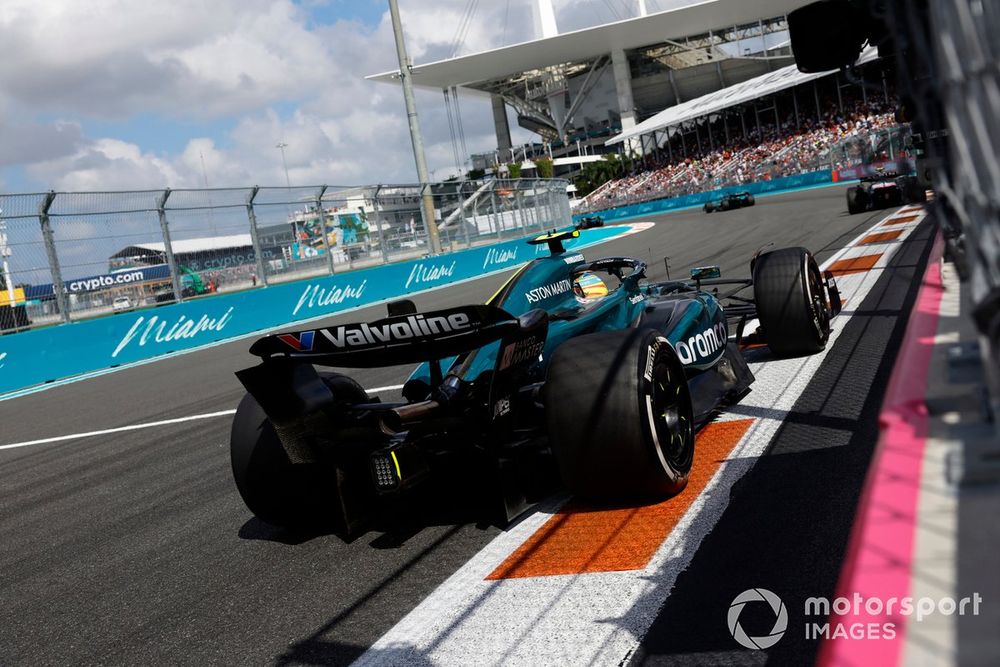The Silverstone-based squad brought a new lower drag rear wing to Miami in the hope that a better straightline speed would help it in the fight against its rivals.
However, despite running it in practice, Aston Martin went back to its more usual configuration – which inevitably made things harder for its drivers Fernando Alonso and Lance Stroll when it came to racing.
Speaking about why the team had abandoned a design that had been specifically created for the track, team principal Mike Krack explained that the choice was prompted by the lower downforce level triggering more sliding from the tyres.
And, on a weekend when keeping tyre temperatures under control was absolutely critical, both drivers preferred having a car set-up that was better for tyres even if it compromised top speed.
Krack said: “It was more a decision that you make based on tyre behaviour. If you have a lot of sliding, you really weigh up downforce against top speed.
“This is a permanent discussion in the office about whether to go up, or to go down. The drivers have their opinions because they have to try and pass – so we made that choice.
“If we started again, maybe the choice would be different. But the wing choice in the end was not the decisive factor.”
Aston Martin’s Miami upgrades in detail
Fernando Alonso, Aston Martin AMR24
Photo by: Steven Tee / Motorsport Images
The centrepiece for Aston Martin’s Miami upgrades was its rear wing, with the team making a shift back towards a more traditional endplate and tip section design. This meant the parts formed one surface, rather than creating a disassociation.
This design is more akin to what was intended when the 2022 regulations were originally framed and before teams started to pursue the semi-detached variants.
These alternative ideas have become commonplace up and down the grid and combat the inefficiencies posed at the endplate and flap juncture.
To take further advantage of the changes made with the rear wing, Aston Martin also had a new beam wing configuration, with just a single element employed and the outer sections backed off to help reduce load and drag.
Also listed amongst the changes in the car presentation document was a change in specification for the front wing, with the flap design altered to balance the car front-to-rear to match the aforementioned lower downforce rear wing and beam wing options.
There were also a couple of extra cooling solutions…
Click Here to Read the Full Original Article at Motorsport.com – Formula 1 – Stories…

